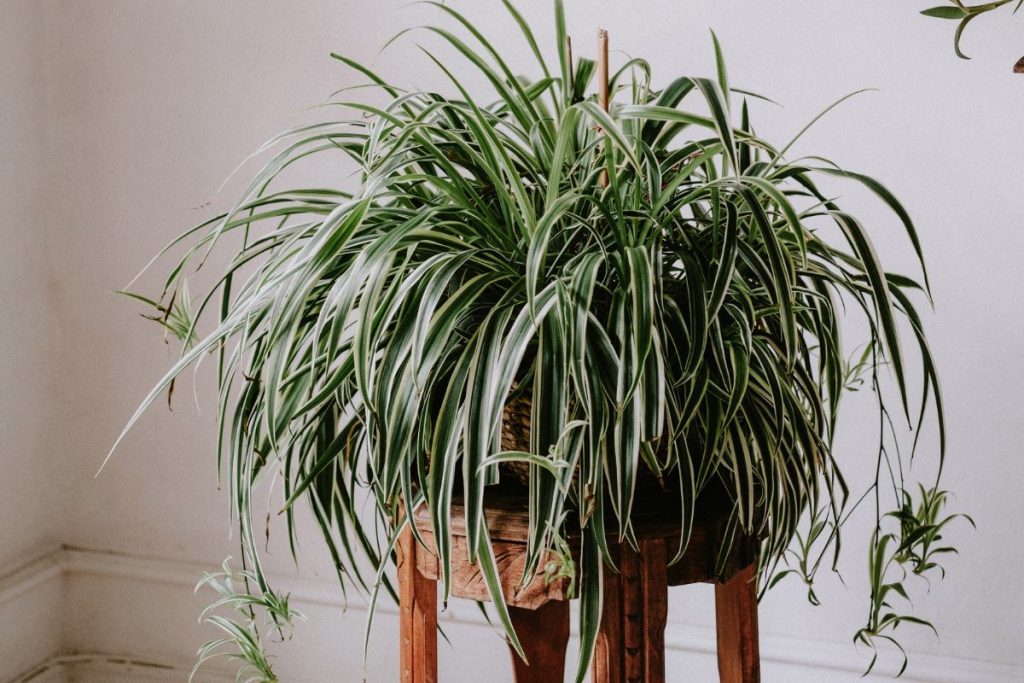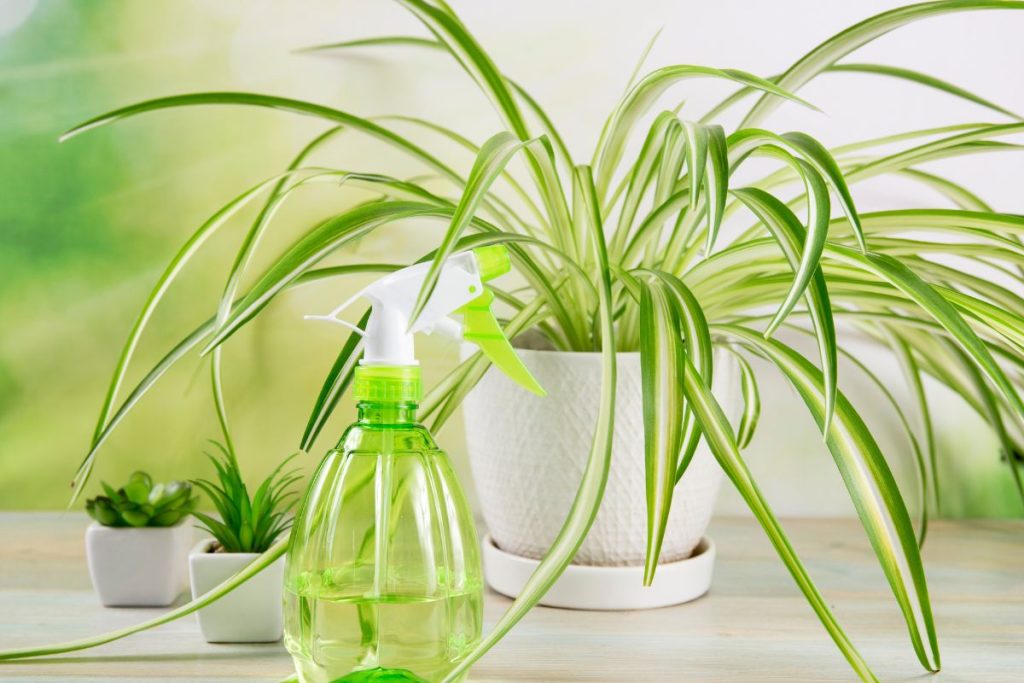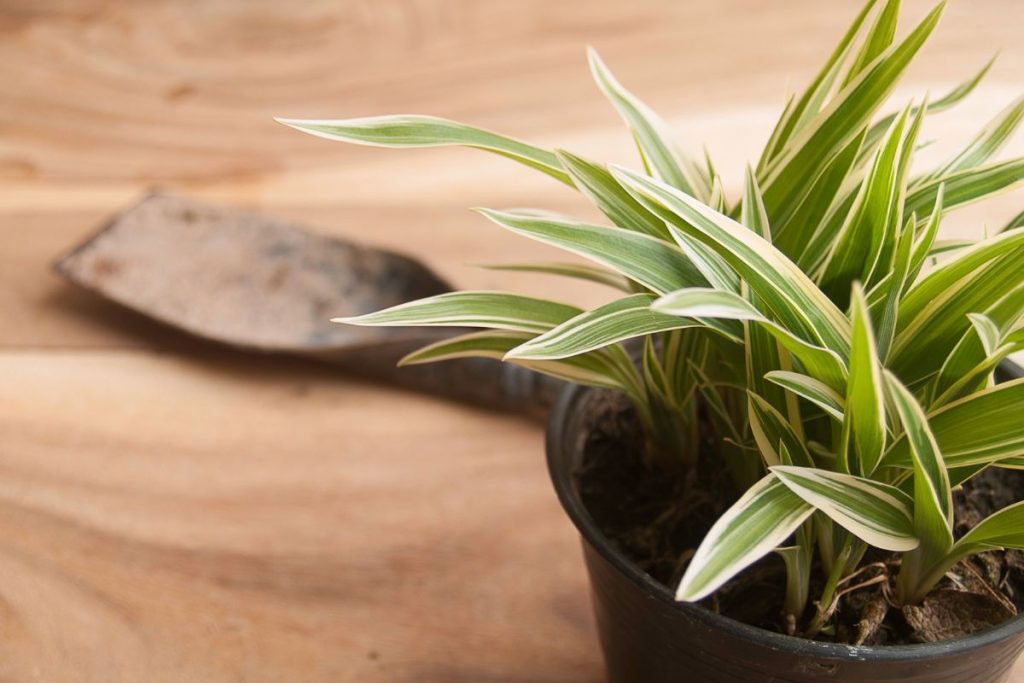Are you amazed by the beauty and resilience of spider plants? These popular houseplants are known for their long lifespan, making them a great addition to any home. Let’s explore how long these amazing plants can live, what we can do to help them thrive, and some common problems you may encounter as a spider plant owner.

Contents
How Long Do Spider Plants Live?
Spider plants can live for up to 20 years or more if they’re given the right care and kept in their preferred surroundings. That’s an incredibly long time, especially when compared to other indoor plants. In fact, it’s almost twice as long as the average lifespan of a Pothos plant! With proper care, some varieties of spider plants can even hang on for 50 years or more. To ensure your spider plant gets the most out of its life, make sure you give it enough light and water and keep it away from drafts or extreme temperatures. With a little bit of attention, you’ll have a beautiful companion that will stay with you through thick and thin!
How Can Spider Plants Live So Long?
Perennials’ unique root structures, like rhizomes, enable them to store large amounts of water and nutrients, making them incredibly resilient and self-sufficient. This means that spider plants can survive long periods without being watered or fertilized. They draw from their natural reserves even when they’re not being taken care of, which is why they can last for so many years. Spider plants are practically immortal!
Their rhizomes allow them to absorb the resources they need to stay alive, so you don’t have to worry about caring for them with such precision as other houseplants. Plus, since these perennials come back season after season, you won’t have to replace them as often either. With spider plants in your home or garden, you can enjoy beauty and low maintenance all year round!
How To Let Your Spider Plant Live Longer
To ensure that your spider plant lives a long and healthy life, you need to provide plenty of indirect sunlight, water it sufficiently, fertilize regularly, remove dying leaves when they appear, and maintain a suitable temperature and humidity. Taking these simple steps will help your spider plant live for many years and stay vibrant till the very end.
Plenty of Indirect Sunlight
Giving spider plants plenty of indirect sunlight is key to their longevity. This means you should place your plant in a spot where it can get bright light but not direct, intense sun. To do this, you could put your spider plant near a window that has sheer curtains or blinds over it, which will help diffuse the light.
If possible, move the plant around during the day so it gets some morning and late afternoon sun for optimal health. Don’t expose your spider plant to too much direct sunlight as this can cause its leaves to burn and fade in color. Avoiding especially hot spots like next to radiators or air conditioners is also important for keeping your spider plant healthy and living longer!
Sufficient Amount of Water

Watering your spider plant regularly is essential to its health. Just like any other living thing, it needs a sufficient amount of water for it to thrive. You should aim to keep the soil moist but not wet. This means that you should water your spider plant when the top inch of soil feels dry. If you don’t give your spider plant enough water, it can become dehydrated and may die prematurely. On the other hand, if you overwater it, the roots can rot and cause death as well. Therefore, make sure to check the soil moisture before watering and adjust according to what you observe. To keep your spider plant healthy and long-living, maintain a consistent watering routine!
Regular Fertilizing
In addition to providing your spider plant with enough water, it’s also important to fertilize regularly. Fertilizing helps your spider plant stay healthy by providing essential nutrients that can help increase growth and promote blooming. You should use a balanced fertilizer diluted to about half of the recommended strength for best results. Apply every two weeks during the growing season, or every month during the winter months when growth is slowed. Doing this will ensure your spider plant lives its longest life possible and remains as healthy as possible for years to come!
Removing Dying Leaves When They Appear
Removing dead or dying leaves as soon as they appear is an important part of maintaining a healthy spider plant. Leaves that are turning yellow or brown should be carefully plucked off the stem with your fingers. Doing this will ensure that the surrounding healthy leaves can continue to thrive and absorb sunlight.
As you remove the dead leaves, make sure you check for pests or signs of disease that may have caused the leaf to die in the first place. If you find any pests, take steps to address them immediately. Additionally, if you begin to see several leaves dying in the same area, it could be a sign of overwatering or poor drainage – so watch out for these indicators and adjust your care accordingly. Taking these steps can help keep your spider plant alive and thriving for many years!
Maintain a Suitable Temperature and Humidity
Maintaining a suitable temperature and humidity level is essential for keeping your spider plant healthy. To ensure it has the best chance of living its longest possible life, keep the temperature between 60-75°F (15-23°C). It’s also important to be aware of the humidity levels. Spider plants prefer a moderate level of humidity, so try to keep it at 40-50%. If you notice any signs that these conditions are not being met, take steps immediately to make adjustments. You can increase humidity by misting the leaves with water or setting up a humidifier in the room where your spider plant is located.
How To Propagate Spider Plants
Once the plantlets have roots at least an inch or two long, it’s time to propagate them. Using clean pruners, carefully cut the plantlets off the stem and pot them in a well-draining container with moist soil. For those without developed roots, place them near their parent plant and keep them moist – after a few weeks, roots will form. If you choose to divide mature plants, gently pull apart the root ball into sections while keeping as many roots intact as possible before replanting them. Propagating spider plants is easy and safe when done correctly!

Common Problems With Spider Plants
Are you struggling with your spider plants? Brown tips and a sparse plant are two common issues experienced with spider plants. If this sounds like you, then take heart – there are simple solutions that can help your beloved greenery flourish!
Brown Tips
Brown tips can signal that a spider plant is getting too much direct sunlight; it’s best to keep them in indirect or shady conditions. Direct light can be damaging, so make sure your spider plant isn’t exposed to intense sunlight for long periods of time. You should also avoid using treated tap water when watering your plant, as the chemicals and salts found in it can cause brown tips. Instead, opt for rainwater or untreated bottled water which will be less harsh on the delicate leaves of your spider plant. With the right care and environment, you can ensure that your spider plant not only survives but thrives for as long as possible.
Sparse Plant
If your spider plant is looking sparse, it’s likely a sign that it needs more room for its roots. You may need to repot the plant and divide it so that there is enough space for the root system to spread out. This will help direct the energy of the plant into producing new shoots instead of struggling with overcrowded roots. Cutting away some of the baby ‘plantlets’ can also help redirect energy into creating new growth. Make sure you use fresh potting soil when repotting as well as an appropriate sized pot with good drainage. Taking these steps can ensure that your spider plant lives a long and healthy life!
Conclusion
You can expect your spider plant to live up to 20 years with proper care! That’s quite a long time, and you’ll be able to enjoy their beauty for many years. With the right environment and the right nutrients, your spider plant can thrive and last for even longer. Plus, you can propagate your existing plants so they can keep living on with each generation. So go ahead and give it a try – your spider plant will thank you!
